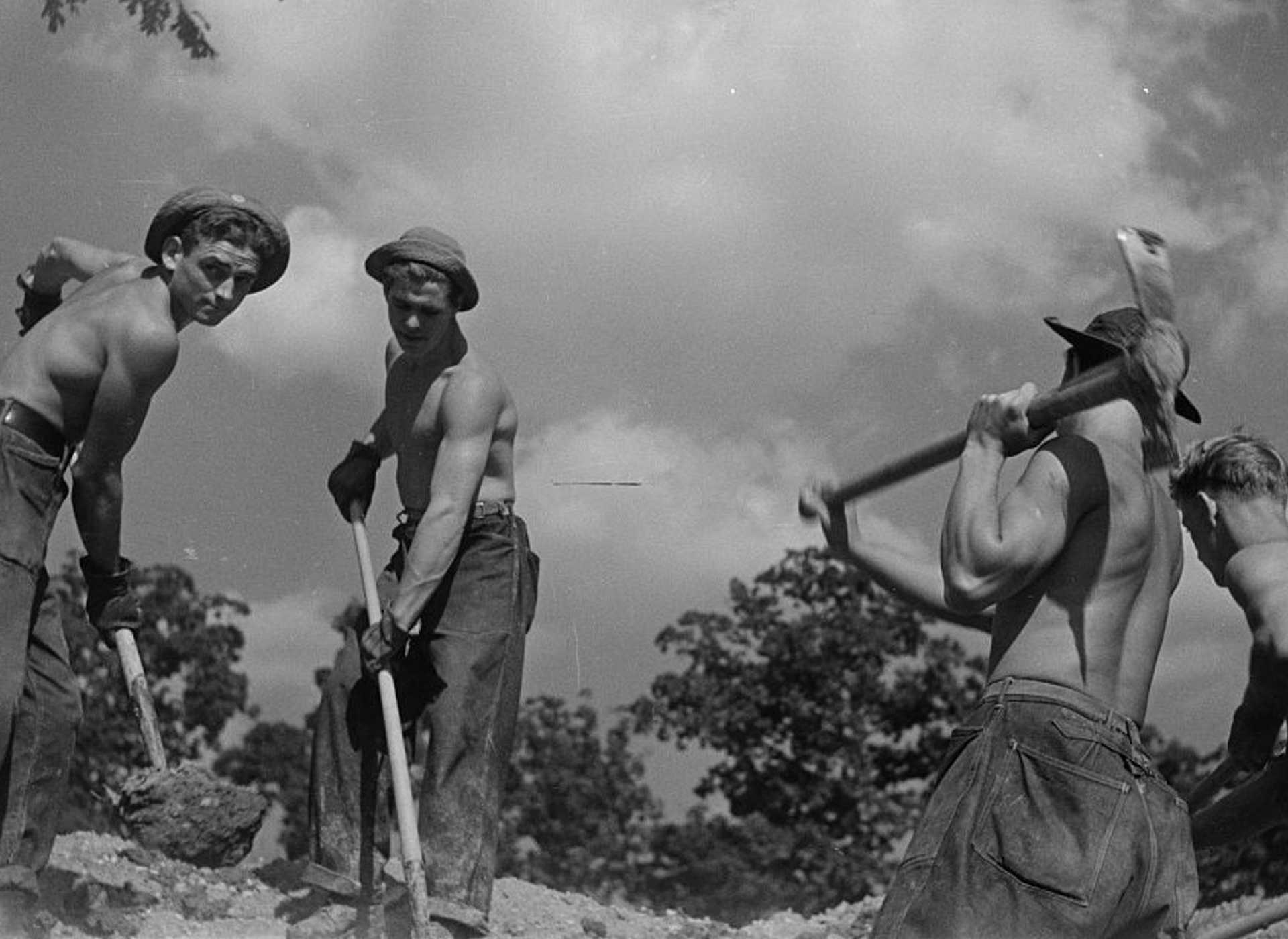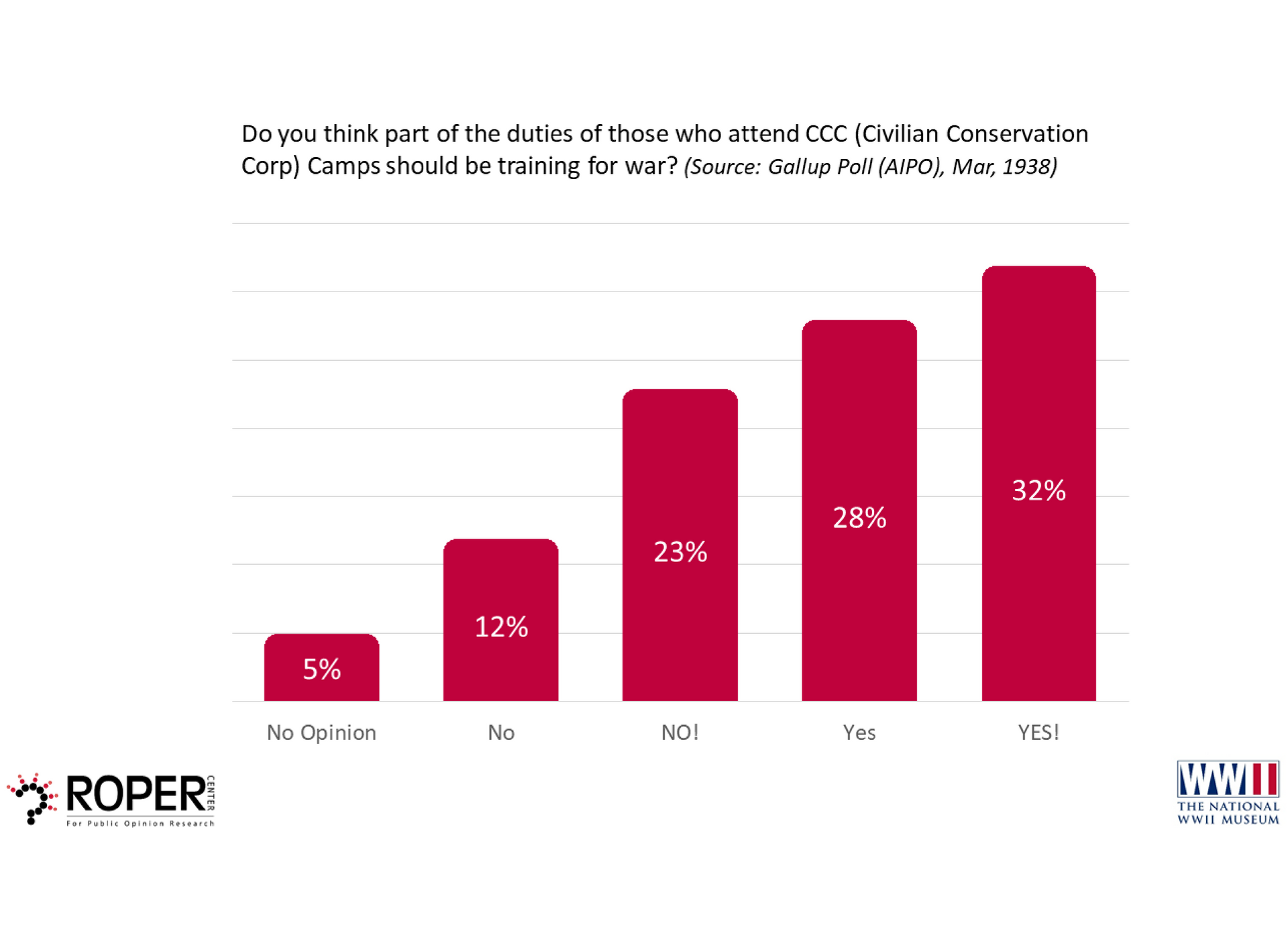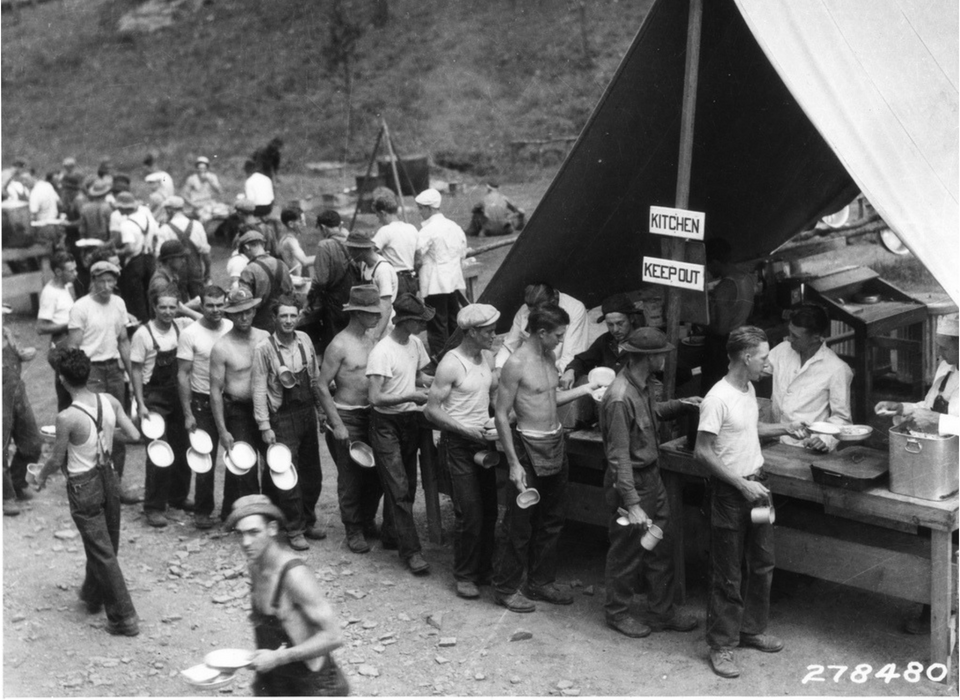Background:
Have you ever hiked or camped in a national park? Ever been to Yellowstone or the Grand Canyon? Next time you do, you need to stop and think about the Civilian Conservation Corps. Good chance they laid the hiking trails, made the campsites, and the roads going into our national parks.
When Franklin Roosevelt was elected president of the United States in 1932, he introduced the New Deal as his plan to help America recover from the Great Depression. One of the key pieces of legislation in the New Deal was the Emergency Conservation Work Act (EWC), more commonly known as the Civilian Conservation Corps (CCC). Before the CCC came to an end, as a result of World War II, it proved to be one of the more successful New Deal programs.
The CCC proved to be beneficial on several levels. It provided work for young men who had been unemployed for years. It restored our depleted forests and implemented the prevention of soil erosion. It also gave young men the chance to leave their homes for the first time and experience the great outdoors. The income they earned was sent home and provided families with money they previously did not have. The young men learned to read, type, how to drive trucks and carpentry skills. More importantly, it gave the young men a sense of purpose and they experienced the satisfaction which is gained from hard work.
Young men age 18 – 25 unemployed and unmarried joined the CCC for a six-month enlistment. They could extend that enlistment for up to two years. Each worker received $30 a month in payment, a dollar a day, and he was required to send home $22 to $25 each month. He received three meals a day, clothing, room and board and medical care. Many of the young men had never eaten like this before; they had fresh eggs, vegetables, and fruit. In addition to the financial and health benefits, they had the opportunity to expand on their education. Over 40,000 men were taught to read and write while enrolling in educational programs held in the evening after work hours.
The CCC was a model of success. On March 9, 1933, President Roosevelt addressed the 73rd Congress to obtain authorization for the program. Only a month later, the induction of the first men into the program came on April 7, 1933. The initial call-up was for 250,000 men. By July of 1933, there were over 300,000 men in the CCC. 1935 was the height of the program with over 500,000 men serving in over 2,500 camps operating in all states. California had over 150 camps; there were also camps in Hawaii, Alaska, Puerto Rico and the Virgin Islands. If you add the support staff, supervisors, education instructors and administrators, the total was more than 600,000 employed by the CCC.
Women were not allowed to join the CCC. African Americans did join the CCC. They lived and worked in separate camps. There were over 88,000 Native Americans in the CCC. World War I Veterans were given preference over job locations and job responsibilities. Before the program came to an end over three million Americans served in the CCC. It is estimated roughly five percent of the total male population took part in the CCC during its nine years.
The accomplishments of the CCC were very impressive. Over 2.5 billion trees planted, over 800 State and Federal Parks constructed, 3,500 fire towers erected, 125,000 miles of roads built and over 50,000 acres of campgrounds developed. Farmlands benefited from erosion control and re-vegetation of land lost during the dust bowl of the late 1920s and early 1930s. These farmlands were reclaimed. There are monuments, statues, and plaques dedicated to the CCC throughout the United States. The next time you walk through City Park notice the references and tributes paid to the CCC.

CCC boys at work, Prince George's County, Maryland,1935. Image: Library of Congress.
The Results:

Source: Gallup Poll, March, 1938. Roper Center for Public Opinion Research at Cornell University.
What Happened:
THE CCC NEVER BECAME A TRAINING FACILITY FOR THE WAR
The Civilian Conservation Corps from the beginning was highly influenced by the United States Army. The initial obstacle faced by the CCC was transporting hundreds of thousands of men to their new work sites. Most of the men lived in the east and a great majority of the camps were in the west. Only the Army had the ability and the infrastructure to transport that large a number of people. The camps were spread throughout the United States and the territories, and were constructed, supplied, and maintained by the U.S. Army.
The camps were not military camps; however, they were run much like a military camp. You rose early in the morning, answered role, participated in exercise drills and had breakfast. You then received your assignment for the day. The older men were the leaders. You were expected to listen to and respect their orders. You always kept your bunk made and your area in the barracks clean.
World War II brought an end to the CCC. The country needed all of its resources for the war effort and there was no longer funding for the CCC. The three million men, who served in the CCC, easily transitioned into military life. They were disciplined, trained in team work, and use to hard work. They were ready to join American forces in the fight against tyranny.

WWII Polls
Public opinion polls give us unique insight into America in the WWII era. Each week, historians from the Institute for the Study of War and Democracy work with the archives of the Roper Center for Public Opinion Research at Cornell University to explore what Americans believed and how they felt about events and people related to the WWII years.
Dan Olmsted
Cite this article:
MLA Citation:
APA Citation:
Chicago Style Citation:






![Max Fuchs, New York City cantor, sings as Rabbi Sydney [sic] Lefkowitz, Richmond, VA, conducts the first Jewish services from Germany.](/sites/default/files/styles/max_650x650/public/2025-10/image1.jpg)


